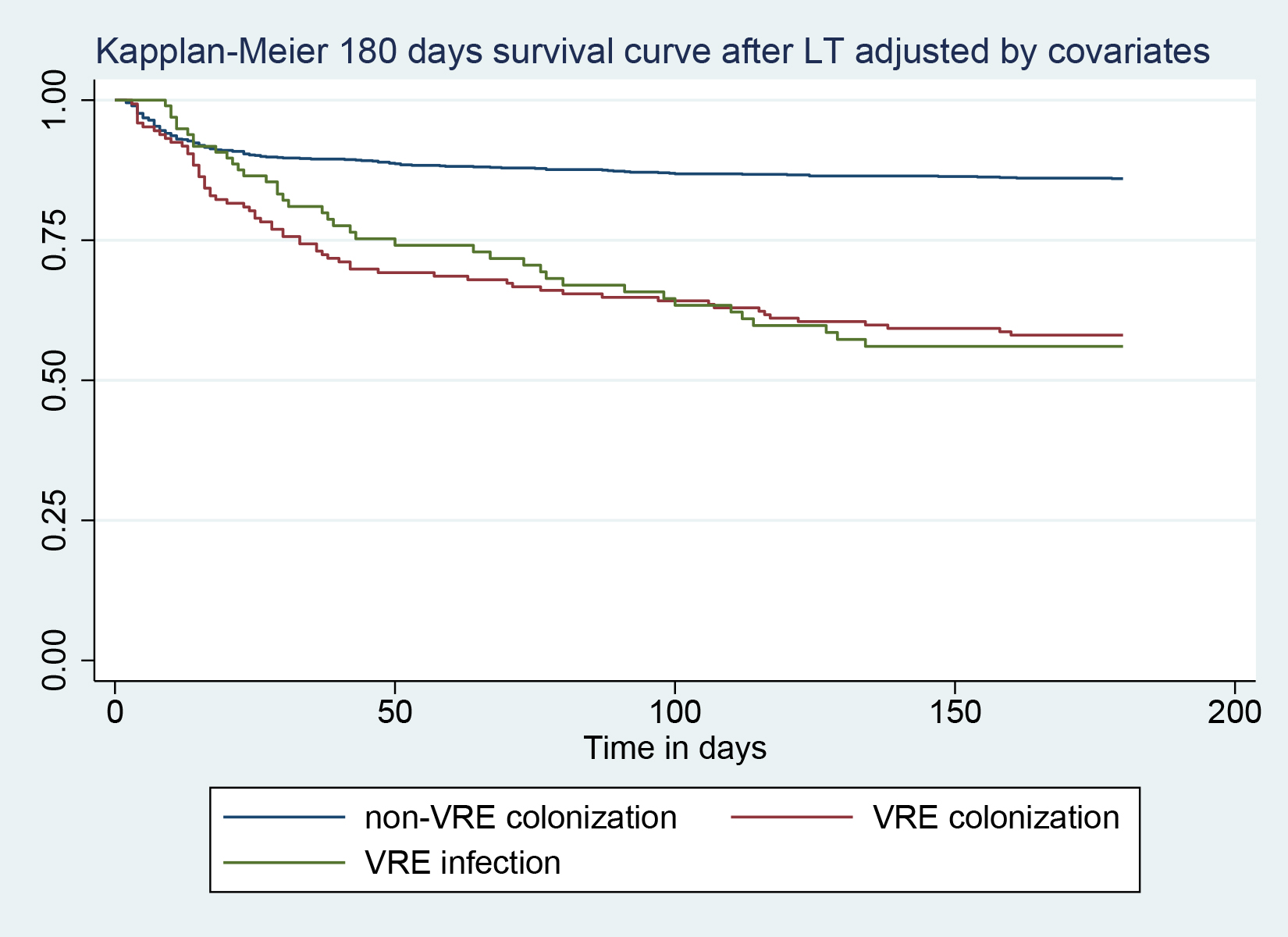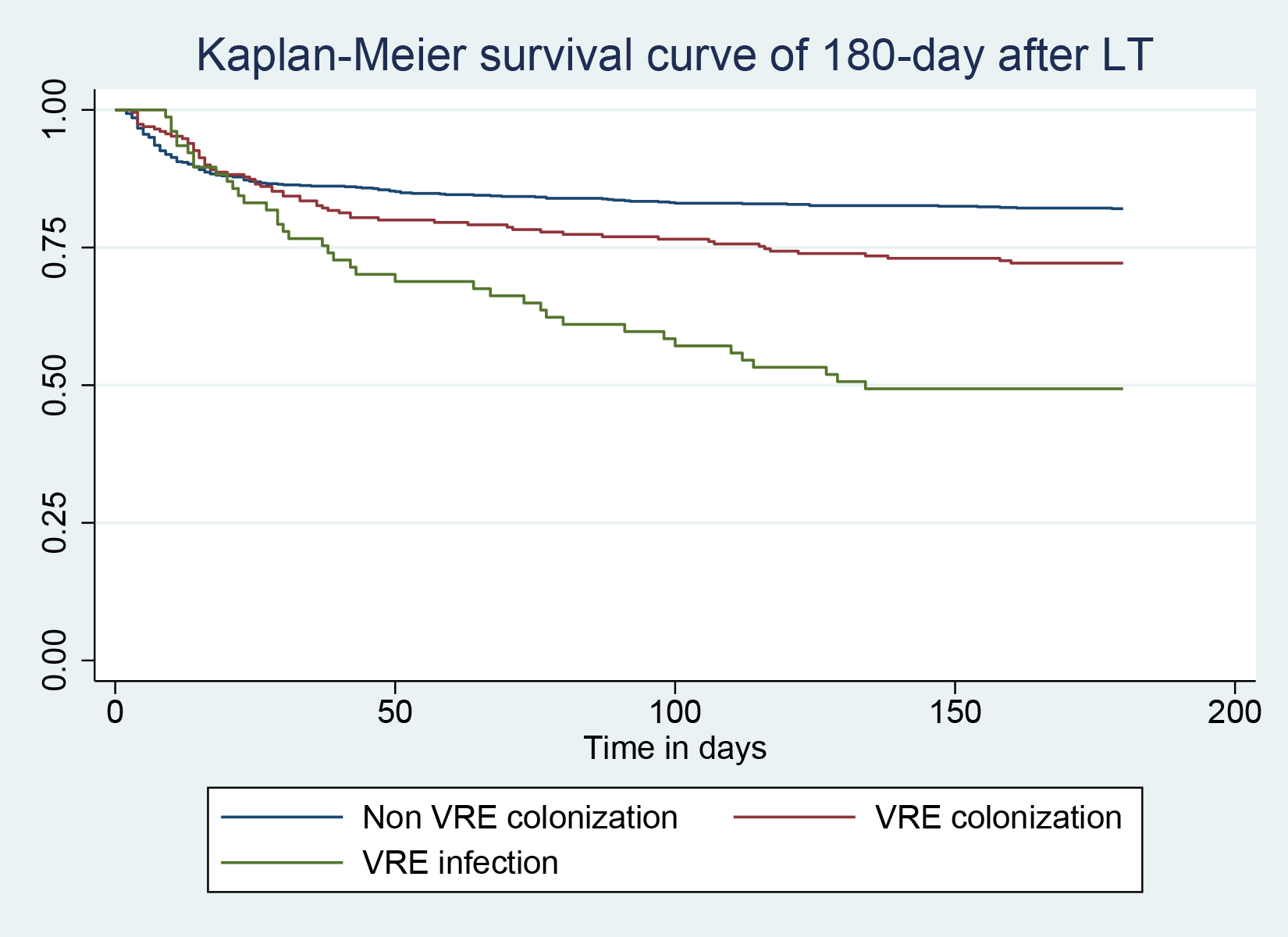Risk factors for vancomycin resistant enterococci (VRE) colonization in liver transplantation: A retrospective cohort study
Nathalia Neves Nunes1, Lohayne Alves Ferreira1, Fernanda Spadão3, Alice Song2, Edson Abdala1, Anna Sara S. Levin1, Luiz Augusto C. D'Albuquerque2, Maristela Pinheiro Freire 1.
1Infectious Diseases Department, Sao Paulo University, Sao Paulo, Brazil; 2Liver transplant service - gastrosurgery department, Sao Paulo University, Sao Paulo, Brazil; 3Infection control and hospital epidemiology service, Sao Paulo University, Sao Paulo, Brazil
Transplant Infectious Diseases.
Background: Vancomycin-resistant enterococci (VRE) are multi-drug resistant organisms frequently isolated in liver transplant (LT) patients, potentially associated to worse outcomes. However, little is known about the risk factors associated with VRE colonization and its impact on survival in this population.
Objective: To identify the main risk factors associated with VRE colonization in LT patients and evaluate its impact on survival.
Methods: This is a retrospective cohort study conducted with LT patients at a tertiary-level hospital in São Paulo, Brazil, between 2010 and 2022. A logistic regression and a COX regression model were employed for the bivariate and multivariate statistical analyses. A p value < 0.05 was considered statically relevant.
Results: A total of 1210 patients were included, with a median age of 55 years (IQR 44 - 61) and a median MELD score of 19.5 (IQR 12 - 29) at LT. Before LT, 119 patients (9.8%) were colonized with VRE, while 201 (16.6%) were colonized after LT. Additionally, 82 patients (6.7%) developed VRE infection post-transplantation. In the multivariate analysis, hepatitis B, Acute Liver Failure (ACLF), MELD SCORE greater than 20, secondary peritonitis prophylaxis, length of hospital stay and ASA score were all associated to VRE colonization before LT, with a p value < 0.05. For VRE colonization after LT, the predictors were higher creatine value, higher MELD SCORE, intraoperative bleeding and retransplant, also with a p value < 0,05. Cox regression analysis demonstrated that VRE colonization after LT was independently associated with a higher risk of death (OR 1.91; 95% CI 1.40 - 2.61; p < 0.001), participants colonized with VRE post-LT had significantly lower survival rates at 1180 days post-LT when compared to non-colonized individuals (see Image 1).


Conclusion: VRE colonization is associated with increased mortality at 180 days post-LT. There are many predictors associated with VRE colonization in LT patients that needs to be assessed.
[1] liver transplant
[2] drug resistance
[3] vancomycin resistance
[4] survival analysis
[5] Enterococcus
[6] colonization
[7] dialysis
[8] fulminant hepatitis
